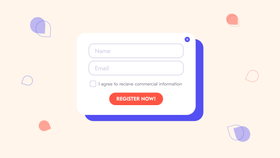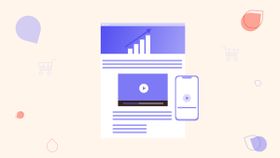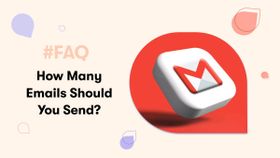B2B Email Marketing Guide: Best Strategies, Ideas and Examples
Looking for the B2B email marketing ideas that work in 2025? We've asked the experts, and here's what we learned.
Published January 31, 2025.

Email marketing remains one of the best ways to reach out to potential and existing customers. With the rise of social media and other digital marketing channels, email marketing may seem like an outdated tactic. However, studies have shown that email marketing still has a high return on investment (ROI) compared to other forms of digital marketing.
What is B2B email marketing, though? Is it really helpful? And if so, how to do it right? We've asked the best email marketing agencies in the world, and here's what we learned:
What is B2B email marketing?
B2B email marketing, or business-to-business email marketing, refers to the practice of using email campaigns to communicate, engage, and build relationships with other businesses. Unlike B2C (business-to-consumer) marketing, where the focus is on individuals as end-users, B2B email marketing targets decision-makers, teams, or stakeholders within a business. The goal is to educate, nurture leads, and ultimately drive conversions that support business growth.
This form of marketing is vital for building meaningful connections with clients, demonstrating expertise, and nurturing long-term professional relationships.
B2B email marketing vs B2C email marketing
Although both B2B and B2C email marketing strategies revolve around email communication, they differ significantly in their purpose, audience, and execution.
Audience
B2B emails are designed to target businesses, often addressing multiple decision-makers, teams, or departments within an organization. In contrast, B2C emails are directed at individual consumers, focusing on their unique needs, interests, and personal preferences.
Content
The content of B2B emails is typically logical, educational, and focused on delivering value through resources like whitepapers, case studies, or industry insights. On the other hand, B2C emails aim to capture attention with emotional appeals, eye-catching visuals, and content that highlights lifestyle benefits or personal enjoyment.
Goals
The primary goal of B2B email marketing is to nurture leads, build trust, and foster long-term business relationships. In comparison, B2C email marketing is centered around driving immediate sales, promoting products or services, and encouraging brand loyalty among customers.
Decision-making process
B2B purchasing decisions often take longer, as they involve multiple stakeholders and require thorough evaluation. Meanwhile, B2C purchasing decisions are typically faster and more impulsive, with a single individual making the choice.
Advantages of running email marketing in B2B
Email marketing is one of the most effective tools in a B2B marketer’s arsenal. Here are some of the key benefits:
Cost-effectiveness
Email marketing is one of the most affordable ways to reach your audience compared to other channels like paid advertising or hosting events. Setting up an email campaign requires minimal investment, especially when using cost-effective tools.
Yet, when done right, it delivers an impressive return on investment (ROI). Whether you're a small business or a large corporation, email marketing offers the perfect balance of budget-friendly outreach and impactful results.
Personalization and segmentation
One of the strongest advantages of email marketing is the ability to personalize your messages and segment your audience. By tailoring your emails to meet the specific needs, interests, or behaviors of your subscribers, you can create more meaningful connections.
Whether it's addressing customers by their first name or recommending products based on past purchases, personalization ensures greater engagement. Segmentation takes this a step further, allowing you to send targeted messages to different groups within your audience, making your campaigns even more effective.
Lead nurturing
Email campaigns play a critical role in building trust and nurturing leads over time. By consistently delivering valuable, relevant content, you can guide potential customers through each stage of their buyer's journey.
For example, educational newsletters, exclusive offers, or case studies can help establish credibility while keeping your brand top of mind. Over time, these efforts make it easier to convert prospects into loyal customers.
Measurable results
Email marketing provides clear, measurable results that allow you to track the success of your efforts. Tools like open rate, click-through rate, and conversion tracking give you deep insights into how your audience is responding to your campaigns. With this data, you can identify what’s working well and refine your strategy to improve future results. This level of transparency and adaptability makes email marketing a powerful tool for any business.
Automation capabilities
Automation is a game-changer in email marketing, saving you time and ensuring consistent communication with your audience. With automation, you can set up workflows to handle repetitive tasks like sending welcome emails, follow-ups, or abandoned cart reminders. This allows you to stay connected with your leads and customers without having to manually manage each step. By automating these processes, you can focus on other areas of your business while maintaining a strong customer relationship strategy.
Why do you need a B2B email marketing strategy?
A well-defined B2B email marketing strategy is essential to ensure your campaigns achieve their goals. Without a strategy, your emails may lack direction, fail to resonate with your audience, or miss crucial opportunities to nurture leads. Here’s why you need one:
It aligns your email campaigns with your business goals, ensuring consistency and purpose.
It helps you understand your audience better and craft emails that meet their specific pain points and needs.
It maximizes efficiency, saving time and resources by automating repetitive tasks.
It increases the likelihood of conversions by addressing different stages of the buyer’s journey effectively.
Top 8 strategies for B2B email marketing
If you’re ready to take your B2B email campaigns to the next level, these eight strategies will help you achieve your goals:
Target customer profiles
Understanding your target audience is crucial for crafting relevant emails. In B2B marketing, this means identifying and targeting different customer profiles within a business, such as:
Initiators: The individuals who identify the need for a solution or service.
Users: The end-users who will benefit directly from your product.
Buyers: Those responsible for purchasing decisions.
Deciders: The key decision-makers who approve the purchase.
Gatekeepers: Individuals who control access to decision-makers.
Influencers: Those who can sway the decision-making process.
Tailoring your messaging to each of these profiles ensures your emails speak directly to their motivations and concerns.
Segmentation
No two businesses are the same, and segmentation allows you to group your audience based on specific criteria. Common segmentation factors include industry, company size, job role, geographic location, or stage in the sales funnel. By segmenting your list, you can send relevant and timely communications that resonate with each audience group.
Coordinate with funnel stages
B2B email marketing is most effective when aligned with the buyer’s journey. Here’s what that looks like:
Awareness: Use educational content like industry insights, blog posts, or whitepapers to introduce your business.
Consideration: Share case studies, product demos, or detailed guides tailored to their pain points.
Decision-making: Provide testimonials, pricing information, or exclusive offers to help close the deal.
Retention and advocacy: Send newsletters, success stories, or loyalty rewards to maintain relationships and encourage referrals.
Use templates
Templates save time and ensure consistency in your emails. Create reusable templates for different purposes, such as newsletters, follow-up emails, or promotional offers. This ensures your emails are professional and aligned with your branding.
Use automation
Automation is a game-changer for B2B email marketing. With tools like drip campaigns and scheduled follow-ups, you can stay in touch with leads without doing all the manual work. Automation also ensures timely communication, helping you nurture prospects more effectively.
Leverage AI tools
AI technology can enhance your email marketing efforts in several ways, such as:
Personalizing subject lines and content
Predicting the best times to send emails
Analyzing campaign performance
Segmenting audiences based on behavior
Automating follow-up emails
Optimizing email design for mobile devices
Testing different email variations with A/B testing
Tracking customer journeys across platforms
Increasing engagement with dynamic content
Leveraging AI tools can help you increase open rates, improve engagement, and optimize your overall strategy.
Find the right time
Timing can make or break your email campaigns. Research shows that emails sent on weekdays during working hours tend to perform better for B2B audiences. However, you should xperiment with sending times and analyze performance data to identify the best schedule for your audience.
Be data-driven
Use data to optimize every aspect of your email marketing strategy, ensuring your campaigns are as effective as possible. Start by segmenting your audience based on factors like demographics, purchase history, or engagement levels to deliver personalized content that resonates.
Dive deeper into crafting compelling subject lines that grab attention and encourage opens, while also considering the best times to schedule campaigns for maximum impact.
Regularly analyze key metrics such as open rates, click-through rates, conversions, and even unsubscribe rates to gain a clear understanding of what’s working and what’s not. Use this information to test different approaches, from adjusting headlines and call-to-actions to experimenting with email design and content formats.
Additionally, consider implementing A/B testing to gain insights into specific elements of your emails, like images, layouts, or offers. Over time, these data-driven refinements will help you build stronger connections with your audience, increase engagement, and maximize ROI for your email campaigns. Remember, staying responsive to the data ensures your strategy evolves alongside your audience’s preferences and behaviors.
B2B email best practices
To make your campaigns even more effective, follow these B2B email marketing best practices:
Focus on your subject line
Your subject line is the first impression your email makes, so it needs to count. Make it clear, engaging, and relevant to the recipient. A compelling subject line can significantly increase your email open rates.
(Source)
Personalize
Personalization goes beyond just addressing someone by name. Tailor the content to their specific needs, interests, or challenges. The more relevant your email feels, the better the chances it will resonate with the recipient.
Be conversational
Write as if you’re speaking directly to your reader. Use a friendly, professional tone that feels approachable and builds trust. Avoid overly formal language that might distance your audience.
Use email marketing software
Streamline your email campaigns with tools like Mailchimp or HubSpot. These platforms help you organize contacts, automate workflows, and track performance metrics. They make email marketing more efficient and scalable for businesses of any size.
Keep it short and sweet
Most professionals don’t have the time or attention span for long emails. Focus on delivering your message quickly and clearly. Edit ruthlessly to remove any fluff.
Make it easy to read
Busy readers appreciate clear formatting. Use bullet points, short paragraphs, and concise language to make your email scannable. A clean layout keeps readers engaged and ensures they don’t miss key details.
Always include a CTA
Guide your readers with a clear call-to-action (CTA), whether it’s scheduling a demo, downloading a guide, or visiting your website. The CTA should stand out visually and be action-oriented. Without it, your email may lack direction or purpose.
Make your design pop
A visually appealing email grabs attention and reflects your brand identity. Use colors, fonts, and visuals consistent with your branding. A strong design can also make the email easier to navigate.
Use A/B testing whenever possible
Test elements like subject lines, designs, and CTAs to see what resonates best with your audience. A/B testing provides actionable insights and helps optimize your campaigns over time. Even small tweaks can lead to big improvements in performance.
Keep data ultra-secure
Data security is critical to maintaining trust with your audience. Always comply with regulations like GDPR to protect recipients’ information. This keeps you compliant and reassures subscribers that their data is in safe hands.
Avoid cold emails
Cold emailing can feel impersonal and intrusive. Instead, focus on building relationships and engaging with your audience authentically. Warm leads are far more likely to convert than unsolicited contacts.
B2B email marketing examples you’ll love
Looking for inspiration? Here are some examples of effective B2B email campaigns:
This color-popping Black Friday email from Designmodo
...Or this super informative one from Miro
...Or maybe this fun product update from Breezy:
Final thoughts
B2B email marketing doesn’t have to be dull or overly formal—in fact, some personality and creativity will get you far.
Experiment with humor, striking visuals, or engaging storytelling to connect with your audience on a human level. Remember, success in email marketing comes from testing, learning, and refining your approach over time.
Now it’s your turn—start crafting emails that captivate, convert, and leave a lasting impression. And if you need help, allow Mayple to match you with one of the best email marketing agencies in the world -- no minimum contracts and you can cancel any time!









